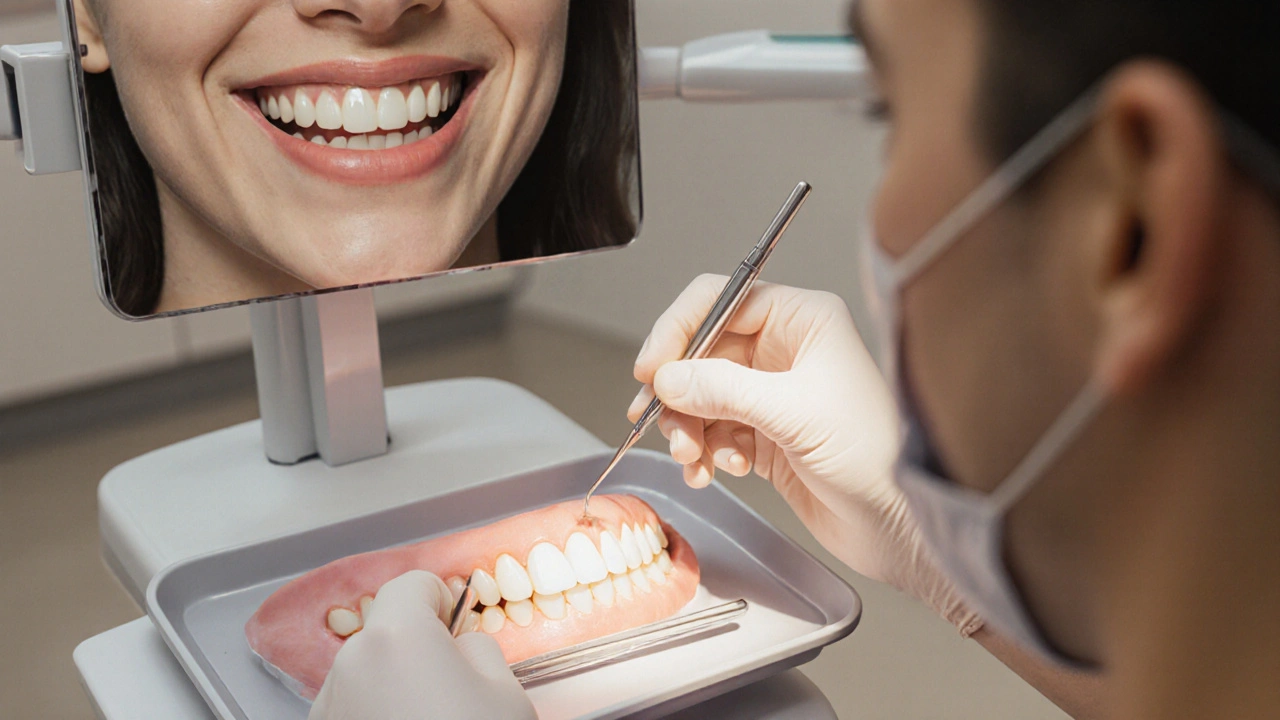Kompozitní inlay: Co to je, když se hodí a co o nich víte?
When you need a strong, natural-looking repair for a damaged tooth, kompozitní inlay, pevná zubní výplň vyrobená z kompozitního materiálu, která se přesně přizpůsobí tvaru poškozeného zubu. Also known as kompozitní vložka, it is a middle ground between a simple filling and a full crown—strong enough to handle chewing forces, but minimally invasive. Unlike regular fillings that are molded directly in your mouth, kompozitní inlay are made in a lab based on a precise impression, then glued in place. This means they fit better, last longer, and look more natural.
They’re especially useful when you have a large cavity that’s too big for a regular filling but not bad enough to need a crown. Think of it like replacing a cracked tile in your bathroom floor—you don’t tear out the whole floor, just the damaged part. Kompozitní inlay work the same way: they preserve as much of your natural tooth as possible. They’re also a great option if you want to avoid metal. No silver, no mercury—just a tooth-colored restoration that blends in perfectly. And because they’re custom-made, they don’t shrink or crack over time like some direct fillings do.
Related to this are zubní výplně, obecný termín pro jakoukoli materiálovou náhradu ztracené části zubu, which include everything from simple amalgam to porcelain inlays. But kompozitní inlay stand out because they combine durability with aesthetics. You get the strength of ceramic with the ease of bonding like a composite. They’re also easier on your gums than metal fillings and less likely to cause sensitivity after placement.
Another key player here is rekonstrukce zubu, obnovování zubu po poškození, infekci nebo kazu. Kompozitní inlay are one of the most precise tools in this process. They’re not just about filling a hole—they’re about restoring function, shape, and even the bite alignment. If you’ve had a root canal or a large cavity, an inlay can bring your tooth back to near-original condition without needing to grind it down like a crown would.
And let’s not forget dentální materiály, speciální látky používané v zubní léčbě, od plombovacích hmot po keramiku. Modern kompozitní inlay use high-tech composites that mimic the light-reflection properties of real enamel. They don’t just look natural—they behave like natural tooth structure under pressure. That’s why many dentists now recommend them over traditional fillings for back teeth, where chewing forces are highest.
You’ll find articles here that explain how these restorations are made, how long they last, what to avoid after getting one, and how they compare to other options like crowns or onlays. Whether you’re considering one for yourself or just curious why your dentist suggested it, this collection gives you real, practical answers—not marketing fluff. No jargon, no pressure. Just clear info on what kompozitní inlay really are, who they’re for, and why they might be the smartest choice for your next dental repair.

